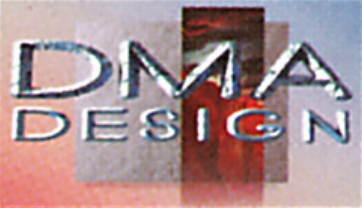

Interview with Steve Hammond by Peter Ward
Thank you for this interview it is an honour for me to interview such a Legend….
I’m not a legend, just willing to talk is all!
What did you want to do when you were at school for a career and what was your first job?
I wanted to be an artist for 2000AD until I decided that I just couldn’t draw people. My first actual job was filling shelves at Wm. Low. After that it was college and then freelancing for Dave Jones until he offered me a job.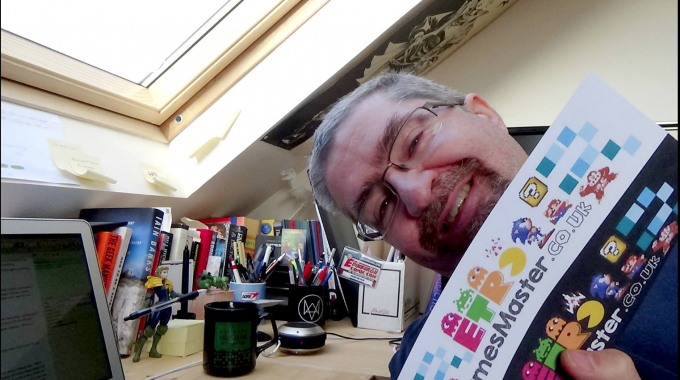
The ZX Spectrum was your first computer is that your favourite computer?
Ah, no. My first computer was a VIC-20. Strange, though, that I don’t have that much affection for it compared to the C64 which came along next. Never owned a Spectrum.
When and how did you to get into game industry?
That would be 1987 or so when Mike Dailly got the chance of porting Ballistix to the C64 and kind of dragged me along in his wake. I’d been doing graphics for fun and this was the first opportunity to do it for real. Not so much getting into the industry as the industry coalescing around us.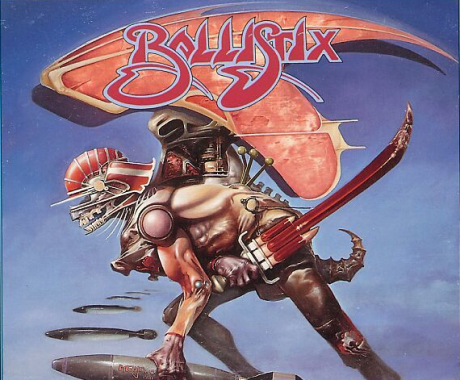
DMA Design was founded in 1987 by David Jones in Dundee, Scotland, you were one of the first employees what was it like at DMA at the start?
I was doing stuff on a freelance basis to begin with, but it wasn’t until I finished college that I was offered a full time job. I was perhaps the second person to work directly for Dave, after Mike on a freelance basis. Oddly, even though I was there from the beginning, the demands of college and the time that took meant that I was only DMA’s employee number twelve.
Did you have involvement in the early projects Menace and Blood Money if so please enlighten us?
I was kind of involved in Menace by drawing the first ship graphics, until Dave found Tony Smith to do the graphics for the entire game. I named one of the levels though, the Ruins of Krueger. Not after Nightmare on Elm Street, though, named after a German astronomer. (I was and am an astronomy nut.) During the Blood Money days I was converting Shadow of the Beast.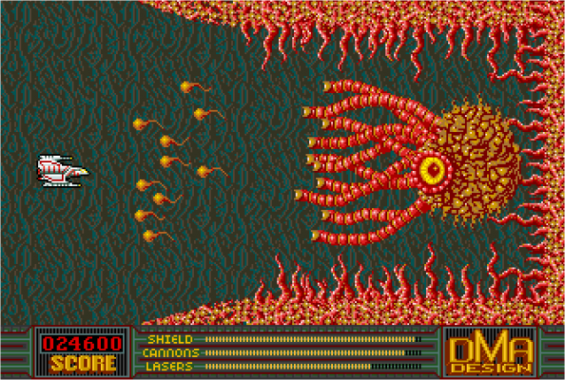
What was the first game you ever worked on?
The first game intended to be sold which I worked on would be Mike Dailly’s Freekout, a breakout style game. I did the graphics for that. After that came the porting of graphics which is where Ballistix and then Shadow of the Beast came in. The first game I ever attempted to write, when I was 13, on the VIC-20 was a top-down view Knight Rider style thing. I got as far as moving the car around the screen but that was just for fun and as far as I got.
DMA’s major breakthrough came with 1991’s Lemmings a dynamic puzzle game that sold over 20 million copies on 21 different systems. You must have been surprised how big Lemmings become and still is?
Strange thing… none of that feels surprising to me. Part of it I think is because we we so young, comparatively, and whatever happens to you and your friends feels normal just by default. Another part is the games industry being so new at the time. There was no frame of reference to compare our experience against. Had we been a band recording an album, there would have been all the other bands to contrast ourselves with, and a lot of literature and lore to tell us how difficult breaking through was. With games, well, it was new territory. Maybe being a success in the games industry was automatic. Nobody told me or suggested that it couldn’t be done. After all the lore spoke of buying Ferrari’s left right and centre. Then again, more likely, I was just oblivious to the meaning of it all.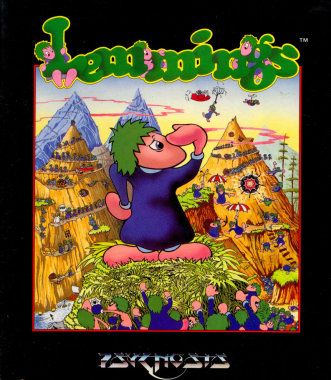
I understand you done a lot of the graphics for Lemmings which graphics did you do and do you have a favourite level you designed? Did you design the lemmings in the game?
I converted the originals to different systems, including the various PC graphic modes for CGA and EGA. It did include some light redrawing, but not as much as changing bitmaps to a character set did, as was necessary for a C64 port. This was around the time that writing took on more prominence for me. I honestly don’t remember which levels I designed, though it wasn’t until Lemmings 2 that any of my levels were accepted into the game proper. Mine tended to be too easy, I recall.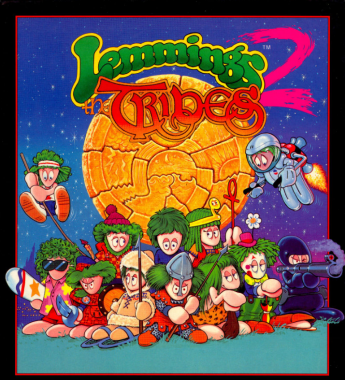
DMA would produce a title for the N64 that Nintendo published. The result of this collaboration was Body Harvest, a third-person 3D vehicular action game with a storyline about aliens arriving on Earth to harvest humans for food. Nintendo requested a number of major overhauls, such as the addition of puzzle and role-playing elements to make the game more appealing to the Japanese market. Please tell us your thoughts on this time?
My thoughts on Nintendo and Body Harvest… I think I need a few free months to get all that down… It was frustration in spades. I’m told that it wasn’t just me who had a bad time on Body Harvest. GTA and Lemmings were important games but Body Harvest was likely formative for the company in a way that nothing else was. Hard to put my finger on, but the nutshell version is Nintendo did not let DMA be DMA during that time. We had what seemed a fairly clear vision to start with and the end result became this hybrid of many things. I am certain that it would have contained the humour and quirkiness of GTA, were it a purely DMA game.
During the late 1990s DMA went through a series of financial moves which saw the company sold three times in two years this must have been a stressful time how did this effect you?
I went freelance in June 1997, so only saw the announcement of the first of Gremlin deal. I certainly did find that a little traumatic as it (temporarily) killed the remake of Hired Guns. Maybe I dodged a bullet by bailing when I did, though following Hired Guns to the US branch was right into the path of another one.
In October 1997 the company released (through the short-lived BMG Interactive label) Grand Theft Auto for the PC what was your involvement and are you amazed how big of reaction the game got and how Huge the franchise is now what are your feelings?
I have decidedly mixed feelings. By the time it was released I could only watch from the sidelines. My involvement was minor. I did a dialogue rewrite on some missions over the course of three months. I think they were subsequently re-re-written a number of times. I sat in on some meetings, particularly with Brian Baglow bouncing ideas off of each other. What I’m most happy about is that my name is right at the start (along with others) of the first design document. We basically had discussions in the Design Department, of which I was a part, and that was entered into the logs, so to speak. At the time, having a conflab about many, many potential projects wasn’t exactly uncommon. I have no idea what I contributed in that first meeting, unfortunately.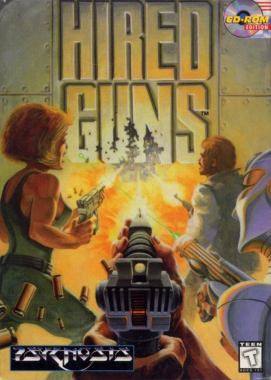
During your time at DMA who was you closest to and are you still in touch?
Mike Dailly is someone I’ve kept in touch with ever since I met him at the computer club in 1984 or so. We are close to the extend that he still probably has half my classic computer collection in his loft. Other than that, a special mention for Scott Johnston, who was the programmer and team leader behind Hired Guns. We had many lunches over which we talked about Science Fiction and planned out ideas for future projects which never happened. I don’t see anyone from DMA often these days, but at my age, that’s kind of true for everyone.
What is the funniest thing and most frustrating thing that happened to you at DMA?
Funniest thing that happened to me… um. One of the artists boiled up a rock in a pan and then pretended that he’d just found a still-hot meteor. Most frustrating is trying to express some ideas to the teams but not succeeding in making myself understood.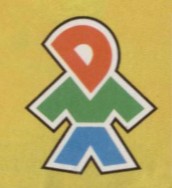
I understand you did the graphics for Shadow of the Beast what tools did you use to develop them and what platforms did you do the graphics for this game?
I converted the originals into something which could be used for the Commodore 64 version and later the TG16. That involved a lot more work than converting Lemmings. For the C64 at least I had to draw everything from scratch. Graph paper only took me so far!
What is the easiest platform to develop for and the most difficult platform please enlighten us with some details?
With my line of work it was always either using Deluxe Paint or various wordprocessors. So the platform didn’t really make any difference to my difficulty. Not for me anyway, it was usually the Amiga I was working with before typesetting and writing became my day job and I got a Mac Centris. I’m sure the programmers would have a very different view!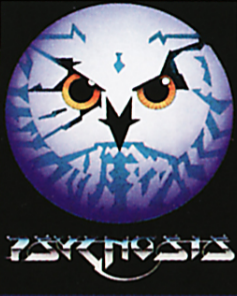
Tell us what your current working on?
I’m not part of the games industry any more and haven’t been for quite some time. Recently it became possible to leave my job in aerospace where I programmed industrial measuring equipment, in order to finally write some books. I’m currently on a first rough draft of a history of DMA Design. Eventually this will exhaust my recollections and then I’ll have to talk to people! Eek! The other is a Science Fiction novel, Bit Patterns, set around thirty years from now when humans develop easy interstellar travel. Suspiciously easy, in fact. Both are probably a few years from being finished.
Oh, and halfway through an essay in which I reckon I can definitively prove that games are art! After that I think I’d like to write the novelisation of Body Harvest, the N64 game. And Hired Guns. But first things first! I have way too many ambitions.
I enjoy some modern games but feel more love for the smaller teams of the past I feel the fun factor has gone in modern games and are more like movie productions; games can be bug ridden now as patches can be made. in the past we didn’t have updates and in app purchases. What is your view of our industry now?
I don’t actually like multiplayer, or clicking to share scores or any of that social stuff. Mainly because I always get trashed. I liked games which I could lose myself in and forget about the rest of the world, difficult if a game keeps reminding you that the rest of the world exists. But then that’s the beauty of the current games industry – there is something for all tastes. Modern classic-style games are there if you want them; they’re a distinct sub-genre even having sub-genres within them. Even modern Spectrum games are being made.
Here are some questions about retro games:
My favourite computer was my Amiga and my favourite console the Megadrive do you have a favourite?
Amiga. Not only that, the Amiga 1200. I still have mine, it still works and I even intend to built a new one once that’s possible. New accelerator cards, new cases in different colours, even a new OS in the form of AROS if you really wanted. Something wonderful has happened. Your Amiga is alive! (Remember that?) I only briefly owned a console, a SNES, before lending or selling it to a friend (can’t remember which).
What is your favourite retro game?
Frontier: Elite II. Even though I’m certain it cannibalised Hired Guns sales for that Christmas.
Do you still game on the current consoles if so whats your favourite game?
I’m only as current as the PS3 right now. I hadn’t been gaming for years so I thought I’d reintroduce myself gradually by playing older-style games, like I was a time-traveller from 1995. You’ll call me nuts, but I have a soft spot for Duke Nukem Forever. I really enjoyed Bioshock and might give Watchdogs 2 a shot when it’s out.
Whats the worst game you have ever played?
Can’t remember the name, but it was a C64 platformer with pixel-perfect collision. So perfect in fact that I spend a whole evening not getting past the first screen.
Finally what game or feature would you like to see on Retrogamesmaster in the future?
A campaign to remake various games. Such as, go I don’t know, Hired Guns, or something. I have no stake in this whatsoever. You believe that, right? Or maybe features unearthing all those obscure characters from The Beginning of Games of which no-one has heard anymore.

